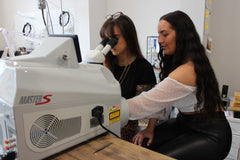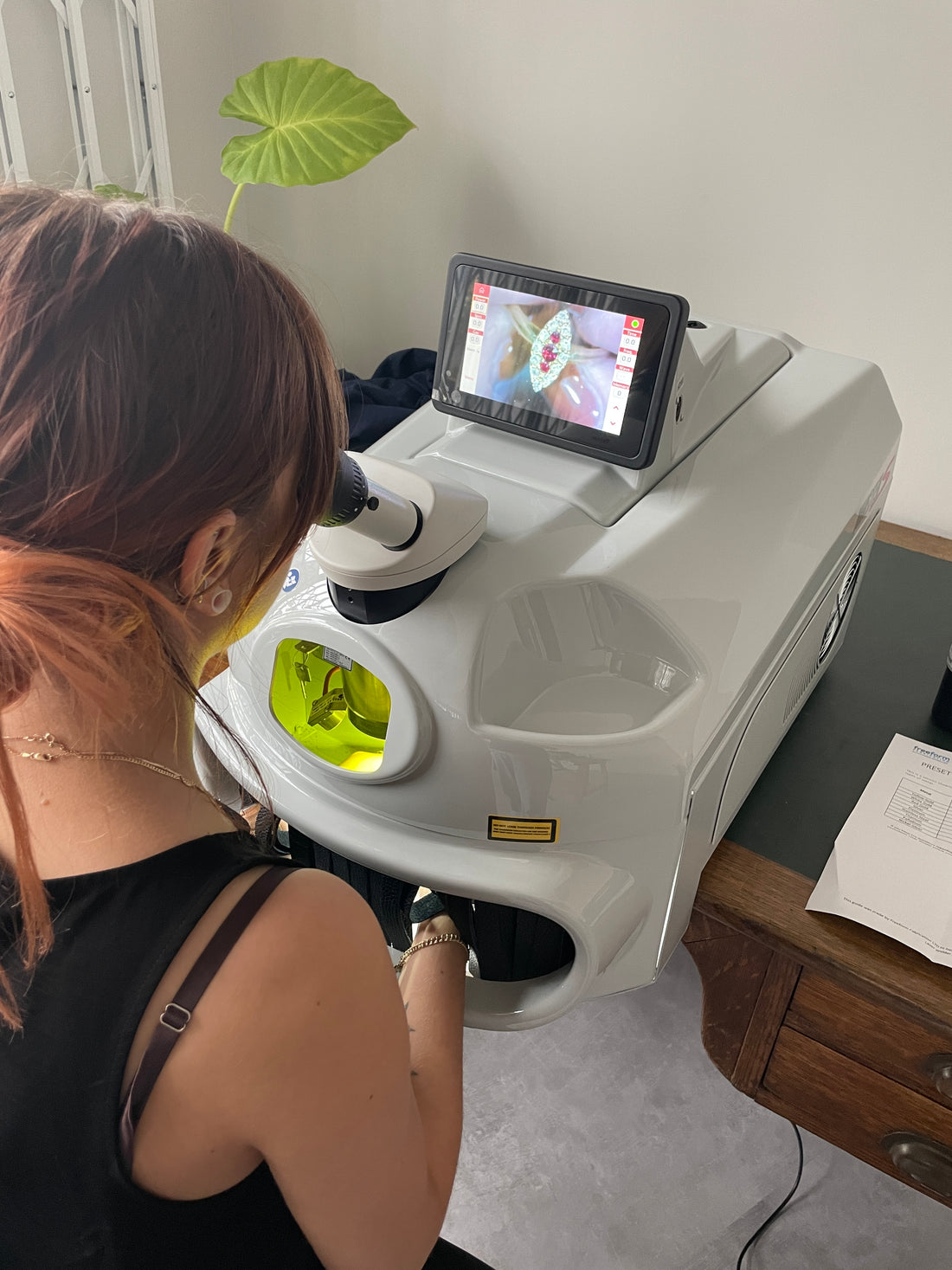In 2022 we decided to purchase a Laser Welder to assist in our jewellery making workshop.
Laser welding is a popular method used in the jewellery industry for precise and high-quality welds. It offers several advantages over, and in conjunction with, traditional methods such as soldering or torch welding. Laser welding uses a highly concentrated beam of light to fuse metal pieces together. Here are some key points about laser welding in jewellery:
1. Precision: Laser welding allows for precise control over the welding process, enabling jewellers to work on delicate or intricate pieces with accuracy. The focused laser beam minimises the heat-affected zone, reducing the risk of damaging adjacent areas.


2. Speed: Laser welding is a fast process compared to traditional methods. The laser beam can be precisely directed to the specific area requiring welding, resulting in quicker repair or manufacturing times.
3. Clean and Invisible Welds: The laser welds in jewellery are generally clean and almost invisible when executed correctly. The welding process creates minimal distortion, leaving behind a seamless joint that requires minimal finishing work.
4. Versatility: Laser welding can be used on various types of metals commonly found in jewellery, including gold, silver, platinum, and titanium. It can handle a wide range of thicknesses, from delicate filigree work to thicker settings and prongs.
5. Non-contact Process: Laser welding is a non-contact process, meaning that the laser beam does not physically touch the jewellery piece. This reduces the risk of accidental damage or distortion, especially in cases where heat-sensitive gemstones or materials are involved.
6. Controlled Heat Input: Laser welding allows precise control over the heat input, minimising the risk of overheating or damaging the jewellery piece. This feature is particularly valuable when working with heat-sensitive gems or delicate materials.
7. Less Material Distortion: Laser welding produces less material distortion compared to traditional methods. The heat input is localised to the welding area, minimising the impact on the surrounding metal and reducing the need for extensive rework.
8. Repairs and Modifications: Laser welding is commonly used for jewellery repairs and modifications. It enables jewellers to fix broken pieces, resize rings, reattach prongs, and perform other intricate repairs with high precision.
9. Consistency and Quality: Laser welding offers consistent results and high-quality welds. The process is repeatable, ensuring that each weld is consistent in strength and appearance, leading to greater overall quality in the finished piece.
It's worth noting that laser welding is a specialised technique that requires skill and expertise. Jewellers trained in laser welding techniques can provide exceptional results while minimising the risks associated with the process.
Another huge benefit to having the laser is that we can offer Permanent Jewellery - read our blog here, or book your fitting here.


